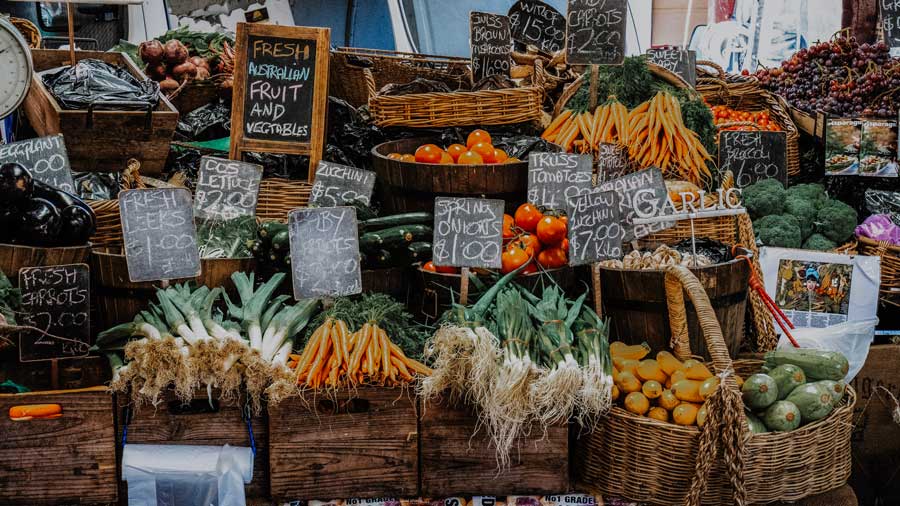Kids now more than ever are adopting unhealthy habits. With faces stuck in an iPad and a pandemic limiting social interaction, nutrition may not be the first thing on your mind. It’s easy to forget that happy meals still contain processed junk.
Since the pandemic caused our kids enough suffering, let’s put an end to the culture of eating processed junk. Many of our parents never gave us the nutritional tools we need to thrive in childhood and adulthood. By establishing a healthy diet plan for kids, we give them the many benefits of healthy eating in early childhood.
Healthy Eating Tips for Kids
To put it simply, kids must consume a balanced diet. Finding safe ways to detox your child produces only short-term relief. Making sure your kids get the best food for children’s growth is important. Consuming nutrient-dense foods not only helps them naturally detox but more, importantly, helps them grow and function.
However, in a world full of fast-food chains and empty-calorie junk, where do you start? Most of us never learned the basics of building a healthy diet, let alone a diet plan for kids.
We’ll begin with some essential healthy eating tips for kids, then narrow it down for you. Therefore, to start, macronutrients and micronutrients compose a balanced diet. They thus contribute to some of the best food for children’s growth.
Macronutrients
Macronutrients may sound complicated, but they only serve as the building blocks of calories. They are a primary key component in a diet plan for kids. They include proteins, fats, and carbohydrates. For example, one gram of carbs makes up four calories. The same is valid for protein. However, one gram of fat makes up nine calories, making fats more caloric dense.

Carbohydrates
Although some of the latest diet trends like keto include cutting carbohydrates out of your diet, carbs are your child’s energy source. Furthermore, they help a child’s body use the fat and protein properly for building tissues. Carbohydrates have many benefits of healthy eating in early childhood.
Examples of carbohydrates rich in nutrients include:
- Bananas
- Dates
- Sweet potatoes
- Beans
- Oats
- Quinoa
Protein
Protein helps us produce bones, blood and supports producing new cells. Protein is one of the best food for children’s growth, and many adults have protein-heavy diets. Besides, protein breaks down food to help fight infections and carry oxygen.
Types of foods with high protein content include:
- Chicken
- Fish
- Eggs
- Nuts
- Beans
Fats
Fats also help children’s bodies grow. They also help absorb a variety of vitamins and play a role in hormone balance. A diet plan for kids must contain fat. You hear about fat-free foods all the time, but our bodies need fats to survive since they also insulate the body. Healthy fats for kids include:
- Olive oil
- Nuts
- Avocados
- Beans
- Chia seeds
- Coconuts and coconut oil
It can be challenging to make sure kids get all of the nutrients they need, especially if your child is picky. A helpful way to add vitamins to their diet is by giving them a smoothie. Additionally, gummy vitamins are a quick and easy treat that most kids don’t fight. However, be sure to read the back of the nutrition label for any unhealthy diet, additives, or chemicals.

Micronutrients
Micronutrients, on the other hand, refer to the vitamins and minerals macronutrients should contain. For example, a handful of fries and a banana may include the same amount of carbohydrates. However, they have different vitamins.
Vitamin C
Although renowned for fighting infections and the common cold, vitamin C can also help build cells. Including vitamin C in a diet plan for kids helps them heal wounds and makes strong teeth and bones. Foods dense with vitamin C include:
- Oranges and other citrus fruits
- Tomatoes
- Potatoes
- Melons
- Spinach
- Broccoli
- Cauliflower
Fiber
Fiber contributes to healthy bowels. Irregular bowel activity can impact chances of hormonal imbalance, cancer, and heart disease later in life. Foods containing fiber include:
- Nuts
- Seeds
- Chickpeas
- Beans
- Avocados
- Artichokes
- Peas
Vitamin A
Kids and adults both use vitamin A for a range of purposes. It helps kids grow, aids the eyes when light changes, maintains healthy skin and prevents infection. Foods with high vitamin A content include:
- Eggs
- Sweet potatoes
- Apricots
- Broccoli
- Carrots
- Sweet peppers
- Black-eyes peas
Iron
If you want your child to have healthy blood, be sure they get enough iron. Iron helps carry oxygen to cells throughout your child’s body. Foods with high iron content include:
- Chicken
- Tofu
- Turkey
- Spinach
- Shellfish
- Legumes
- Quinoa
- Pumpkin seeds
Folate
Not only should pregnant moms consume folate, but so should kids. Folate helps the growth and development of cells in the body. In the vitamin B family, a lack of this vitamin contributes to anemia. Foods rich in folate include:
- Citrus fruits
- Brussel sprouts
- Beets
- Eggs
- Legumes
Calcium
Throughout your childhood, you probably were told you should drink your milk. Although researchers debunked the myth that milk builds strong bones, kids still need calcium. Calcium contributes to heart, nerve, and muscle function. And yes, it also helps build strong bones and teeth. Foods rich in calcium include:
- Tofu
- Spinach
- Broccoli
- Seeds
- Salmon
- Beans
- Lentils
- Rhubarb
- Edamame
It can be challenging to make sure kids get all of the nutrients they need, especially if they are picky. A helpful way to add vitamins to their diet is by giving them a smoothie. In addition, gummy vitamins are a quick and easy treat that most kids don’t fight. However, be sure to read the nutrition labels back for any unhealthy diet, additives, or chemicals.




